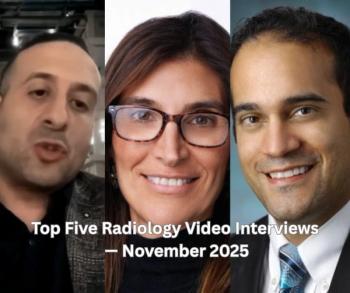
Stress in radiology: It comes with the job
Stressed out at the workstation? You’re not alone. A survey presented at a scientific session Wednesday found relatively high levels of stress across a broad spectrum of radiologists.
Stressed out at the workstation? You're not alone. A survey presented at a scientific session Wednesday found relatively high levels of stress across a broad spectrum of radiologists.
Particularly hard hit by stress are women radiologists and those in their 30s.
Conducted by a team at the University of Maryland and led by Dr. Bruce Reiner, the online survey used the Perceived Stress Scale, a common 14-item survey to measure stress. One-hundred and ninety-two respondents completed a questionnaire that assessed demographic, occupational, and technology data. A stepwise regression analysis was used to evaluate stress predictors.
The survey was promoted to the radiology community by Diagnostic Imaging magazine and Auntminnie.com.
The stress scores in the survey population ranged from 6 to 46 with the higher scores reflecting higher stress levels. The mean score for radiologists was 24.7 compared with 19.6 for the general population. International respondents made up about one-third of the total and had a mean score of 24.9.
Female radiologists, who composed about one-third of the respondents, boosted the overall stress scores. Their average was 28 compared with 23.4 for men. Urban radiologists, who made up 58% of the respondents, had stress levels of 26 compared with 22.2 for nonurban radiologists.
As might be expected, greater workloads contributed to higher stress levels. Those who worked more than 60 hours per week had a stress score of 28.9. Those who worked less than 20 hours per week had a score of 22.8.
The highest stress levels by age were among those 31 to 40, with a score of 27.7. The lowest levels were among those 51 to 60, with a score of 21.8.
The survey also assessed levels of comfort with computer technology and compared that to stress scores. Interestingly, those who rated their comfort level with computers as high (eight on a scale of 10), had the highest stress score at 29.
The researchers have collected data based on the Neo personality inventory. Initial results suggest a strong correlation between a subset of personality traits and stress, they said.
Newsletter
Stay at the forefront of radiology with the Diagnostic Imaging newsletter, delivering the latest news, clinical insights, and imaging advancements for today’s radiologists.



























